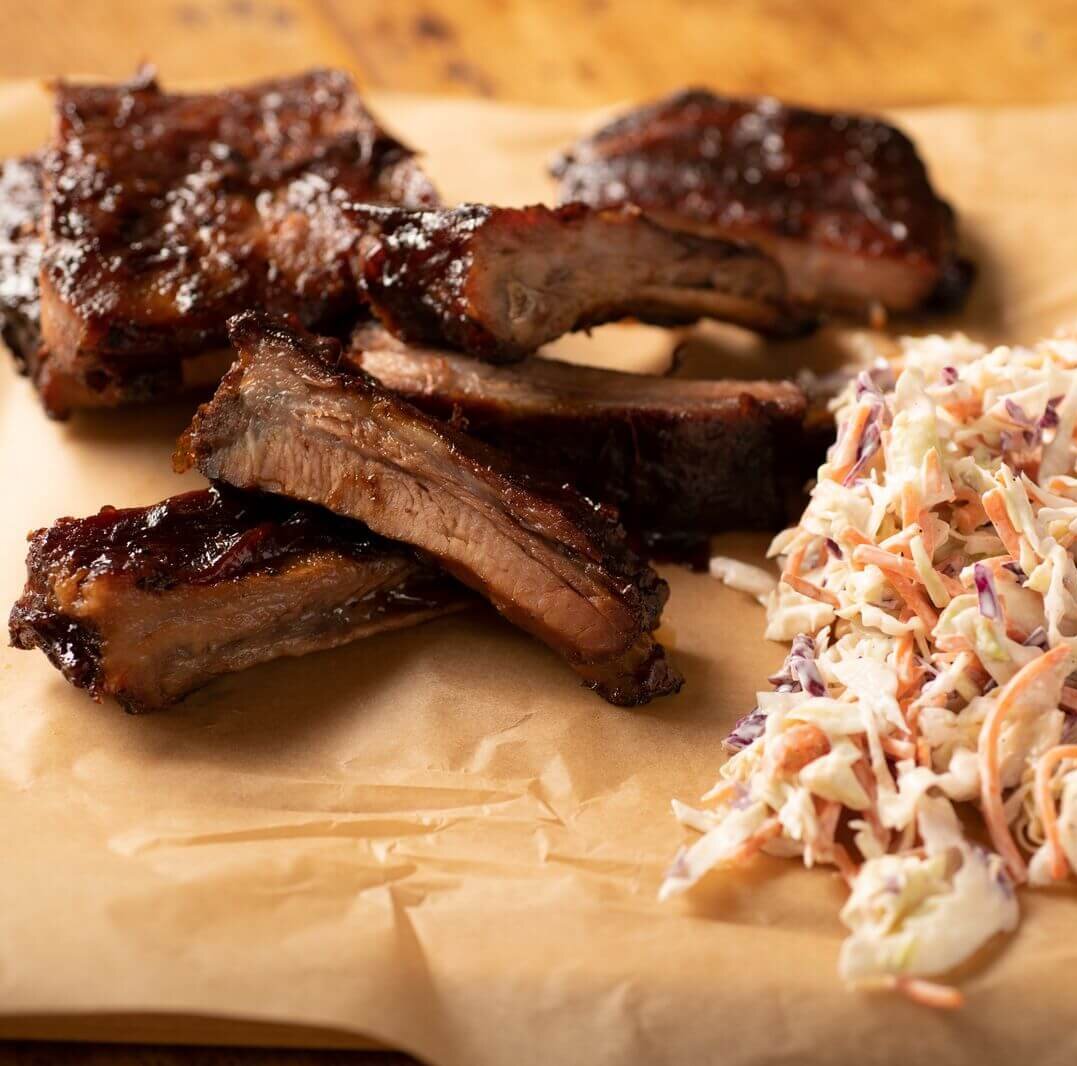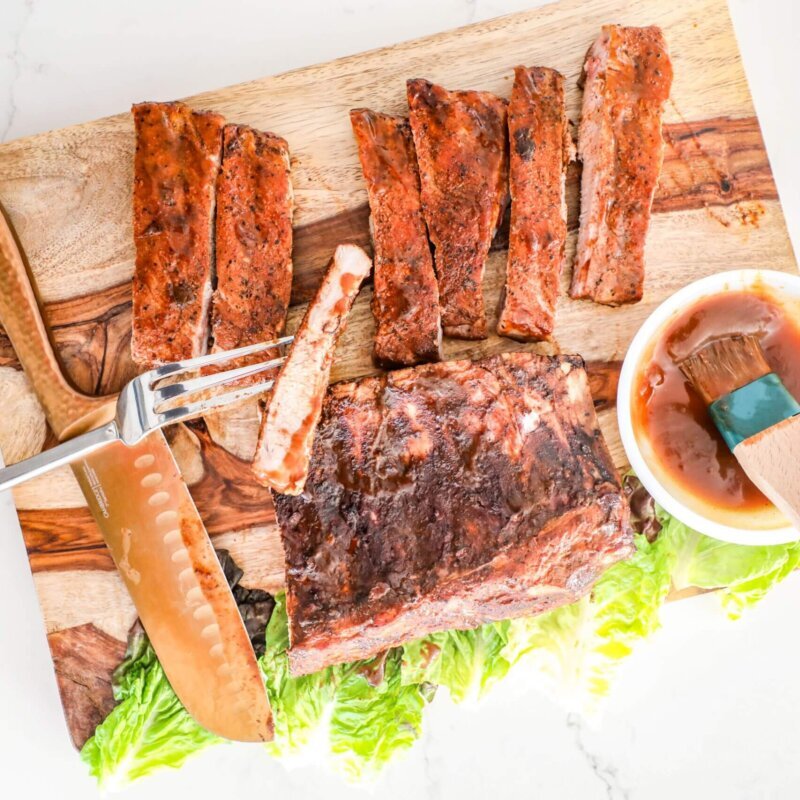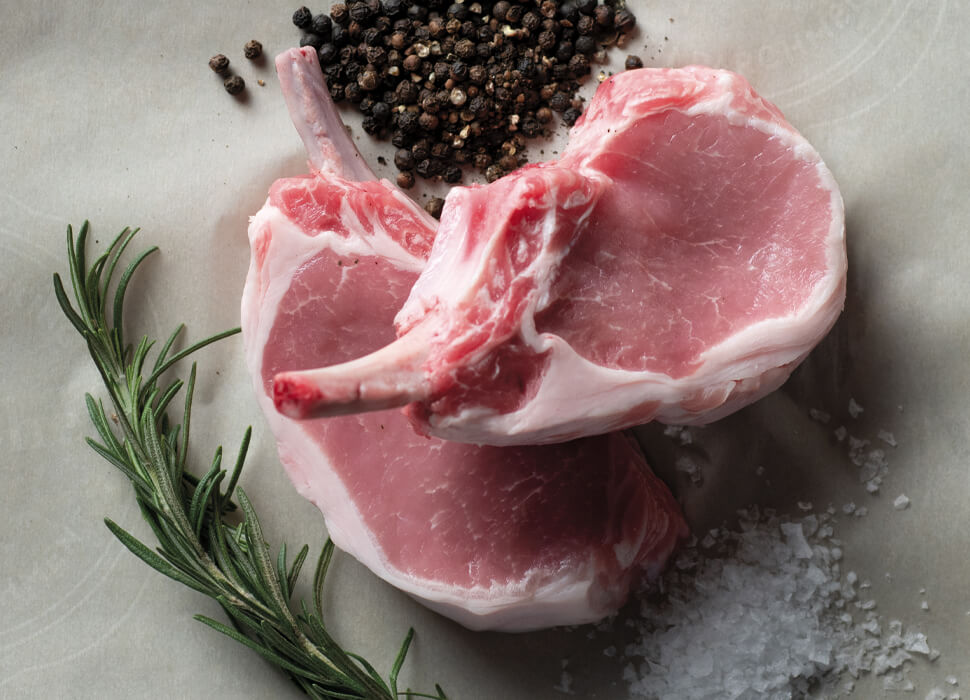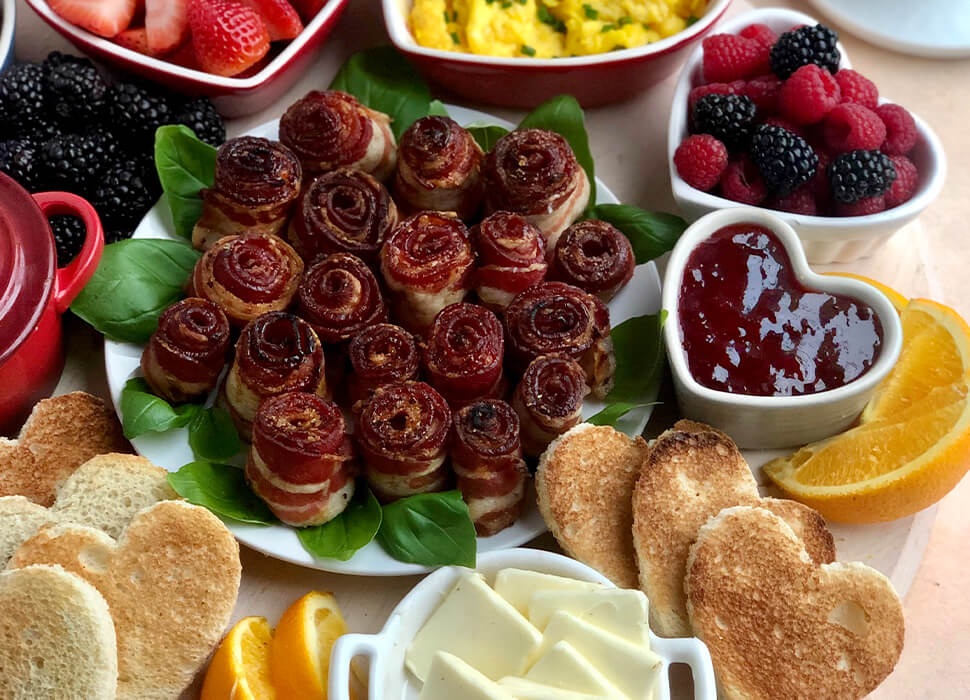We look forward all year to our favorite holiday foods like ham, turkey, and prime rib. But by the time New Year’s rolls around, most of us are getting a little burned out on the traditional fare. This year, why not mix things up a little and add pork ribs to your party repertoire? Baked, grilled, smoked, or even air fried, succulent baby backs or meaty spareribs make for a nice change from the usual on New Year’s Eve, Day, or any time in the New Year. (Let’s not forget Super Bowl Sunday!)
And if you’re tired of cooking after all the holiday hubbub, Coleman Natural has the answer for you—our delicious pre-cooked and sauced half racks or full racks of spareribs are ready and waiting. All you have to do is heat them up and wait for the praise from your impressed guests.
What’s the Difference Between Baby Back Ribs and Spareribs?
Before we delve into cooking techniques, let’s talk about the difference between baby back ribs and spareribs.
Baby Back Ribs
There’s a reason a certain national restaurant chain features a jingle about baby backs. The meat is melt-in-your-mouth tender because it comes from a muscle that doesn’t get much of a workout. They also have a leaner profile. A full rack of baby backs will easily feed two-four people, and because they’re smaller than spareribs, they cook a little faster.
Spareribs (AKA St. Louis ribs)
These are meatier than baby backs, and because they come from the lower ribs closer to the belly, they’re not quite as lean, but that’s what delivers the hearty, porky punch of flavor. A rack of St. Louis ribs is bigger than a rack of baby backs and will take a little longer to cook.
No matter which kind of ribs you prefer and how you choose to cook them, there are a couple of pointers you need to remember.
Season well. Use a commercial rub or marinade or create your own with any flavor profile you like. Let the meat sit in the rub or marinade for several hours or overnight.
Be patient. Cook low and slow to allow the fat to render into the meat. The result will be tender, juicy, and delicious.

How to Bake Pork Ribs in the Oven
If the weather is too chilly to fire up the grill or smoker, it’s super easy to cook pork ribs in the oven.
On the bone side of the ribs, you might find a thin membrane called silver skin that can be tough when cooked. Some butchers remove it, but if it’s still there, use a knife or your fingers to peel off and discard it. You don’t have to if you’re pressed for time, but if you do, the result will be a little more tender and easier to cut after cooking.
Season the ribs with your favorite dry rub or marinate them. Dry rubs can include a mix of salt, pepper, paprika, garlic powder, onion powder, and even chile powder or other spices. If you want to mimic the taste of smoked ribs, add smoked paprika to the blend. Alternatively, you can marinate the ribs in a liquid marinade for a few hours or overnight. Use a combination of olive oil, soy sauce, pineapple juice, apple juice, or vinegar with salt, pepper, and other spices to tenderize and add flavor.
Preheat the oven to 275°F (135°C). Low and slow, remember? Wrap the ribs in foil, place on a baking sheet, and pop them into the oven. Plan on 2 1/2 to 3 hours for baby backs, and about 4 hours for spareribs. Open the foil in the last half hour of cooking and baste with your favorite barbecue sauce.
When they’re done, remove from the oven, cover with foil again, and allow to rest for 10 minutes to let the juices redistribute through the meat. Slice into 2- or 3-bone pieces and serve with plenty of barbecue sauce and your favorite side dishes. And napkins!
For inspiration, here’s one of our most popular recipes.
How to Grill Pork Ribs
Cooking ribs on the grill will make you feel like a seasoned pit master if you follow a few easy tips.
Follow the prep instructions above for seasoning the ribs.
If you’re using a gas grill, preheat it to a low temperature and use indirect heat—light half the burners and put the ribs over the unlit half. Close the grill. That way the heat circulates around them but they cook evenly and slowly without flare-ups. With a charcoal grill, spread the hot coals in half of the grill and place the ribs over the other half. You can also add a drip pan filled with water beneath the meat to add moisture.
Always place the ribs bone-side down and rotate them two or three times during cooking. Otherwise, leave the grill closed.
Use a meat thermometer to check for doneness. For the most tender and delectable ribs, they should be at 180 degrees F. before you take them off the grill.
Cover with barbecue sauce in the last half hour of cooking and let the ribs rest wrapped in foil for about ten minutes when you take them off the grill. For a quick and easy side dish, this cheesy bacon sweet potato casserole fits the bill.
How to Smoke Pork Ribs
Smoking pork ribs gives them a rich, smoky flavor and fall-off-the-bone tenderness. Here’s a basic guide for cooking ribs on a smoker.
Prepare the rack of ribs as you would for baking or grilling.
Preheat the smoker to a temperature between 225°F and 250°F (107°C to 121°C). Maintain a consistent temperature throughout the cooking process. Soak the wood chips (hickory, apple, or pecan) in water while the smoker is heating. Place the soaked chips on the hot coals to create the smoke. Replenish as needed during the process. If you’re using a pellet smoker, follow the directions for your particular brand.
Put the seasoned ribs in the smoker, bone side down. Arrange them in a single layer, ensuring they aren’t overcrowded so the smoke can circulate and they smoke evenly.
Smoke the ribs at the preheated temperature for approximately 4 to 6 hours. The exact time will depend on the type of ribs and your preference for doneness. You can check for doneness by seeing if the meat has pulled back from the bones. Confirm with a meat thermometer. The most tender ribs will be at around 180 degrees F.
Baste the ribs with your favorite barbecue sauce during the last 30 minutes of smoking.
When the ribs are done, place them on a sheet pan and cover with foil. Allow the smoked ribs to rest for about 10-15 minutes before slicing. Slice the ribs between the bones and serve with additional barbecue sauce. And for a delicious side, how about garlicky mashed potatoes?
How to Air Fry Pork Ribs
If you’re in a hurry, air frying pork ribs is a quick and convenient way to achieve a crispy exterior while keeping the inside tender. This process usually works better with baby backs because of the size of the ribs.
Slice the rack into individual ribs or 2-3 bone pieces. Season as above using your favorite rub or marinade. Preheat the air fryer to 375°F (190°C). Place the seasoned ribs in the air fryer basket in a single layer, making sure not to overcrowd to ensure even cooking. If needed, cook in batches.
Cook the ribs for approximately 25-30 minutes, flipping them halfway through the cooking time. Cooking times will vary based on the thickness of the ribs and your specific air fryer model. Brush the ribs with barbecue sauce during the last 5-10 minutes of cooking. Using an instant read thermometer, check the temperature of the meat without touching the bones. The internal temperature should be at least 145°F (63°C). The meat should be tender with a crispy exterior.
Allow the ribs to rest for a few minutes and then serve with additional barbecue sauce on the side.
We’re especially fond of this recipe from our test kitchen.

The Coleman Way
No matter how you choose to cook your baby backs or spareribs, for holiday parties or weekend dinners, look for Coleman Natural at your favorite grocery.
The Coleman Way, since 1875, is our commitment to quality, taking pride in humanely raising animals on family farms in the U.S.A. with no antibiotics ever, no growth hormones, and vegetarian feed. The result is premium, great-tasting, all-natural meats in a variety of cuts and flavors that can be easily prepared and that you can feel good about serving to family and friends.


